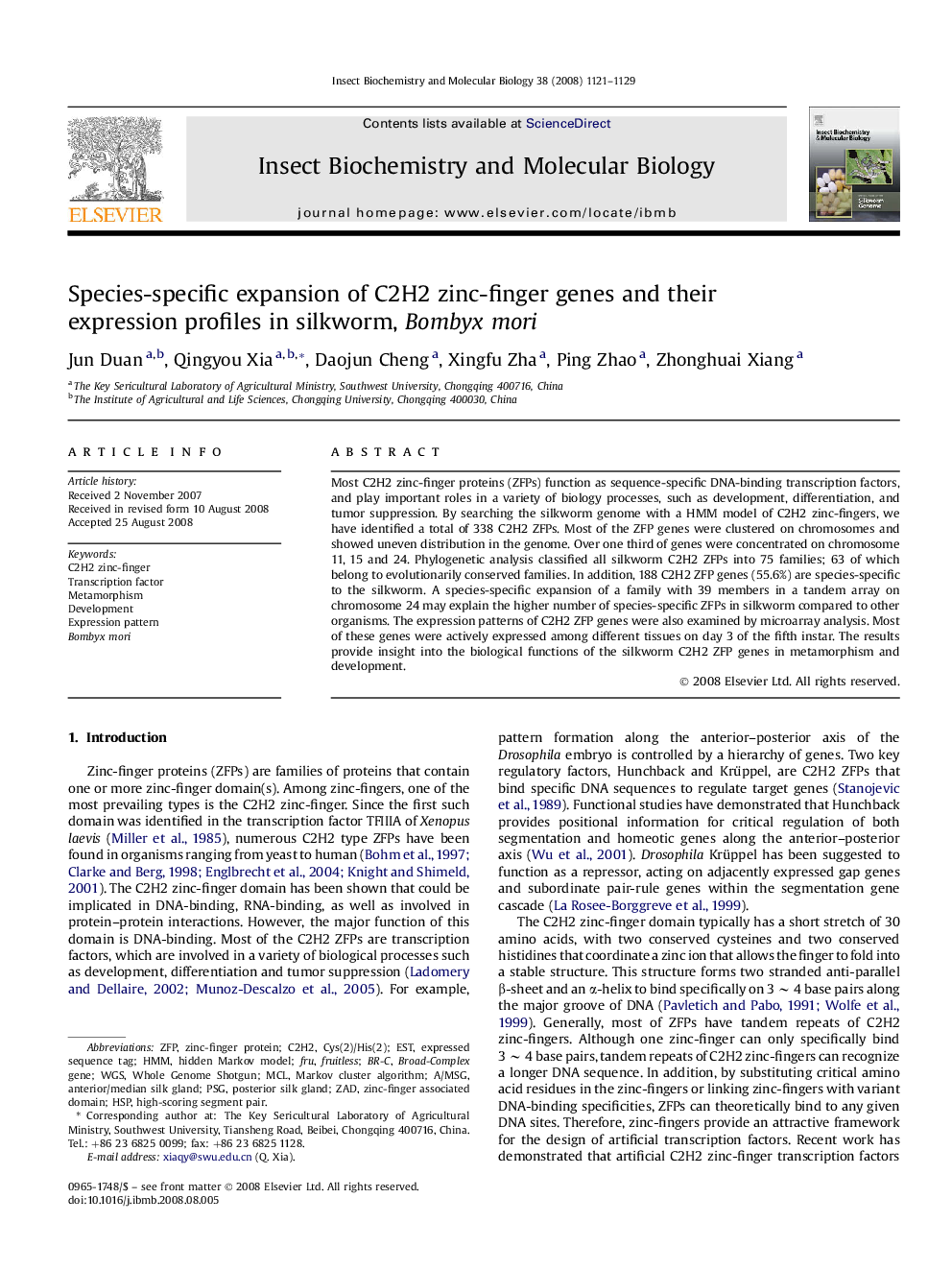| Article ID | Journal | Published Year | Pages | File Type |
|---|---|---|---|---|
| 1982739 | Insect Biochemistry and Molecular Biology | 2008 | 9 Pages |
Most C2H2 zinc-finger proteins (ZFPs) function as sequence-specific DNA-binding transcription factors, and play important roles in a variety of biology processes, such as development, differentiation, and tumor suppression. By searching the silkworm genome with a HMM model of C2H2 zinc-fingers, we have identified a total of 338 C2H2 ZFPs. Most of the ZFP genes were clustered on chromosomes and showed uneven distribution in the genome. Over one third of genes were concentrated on chromosome 11, 15 and 24. Phylogenetic analysis classified all silkworm C2H2 ZFPs into 75 families; 63 of which belong to evolutionarily conserved families. In addition, 188 C2H2 ZFP genes (55.6%) are species-specific to the silkworm. A species-specific expansion of a family with 39 members in a tandem array on chromosome 24 may explain the higher number of species-specific ZFPs in silkworm compared to other organisms. The expression patterns of C2H2 ZFP genes were also examined by microarray analysis. Most of these genes were actively expressed among different tissues on day 3 of the fifth instar. The results provide insight into the biological functions of the silkworm C2H2 ZFP genes in metamorphism and development.
